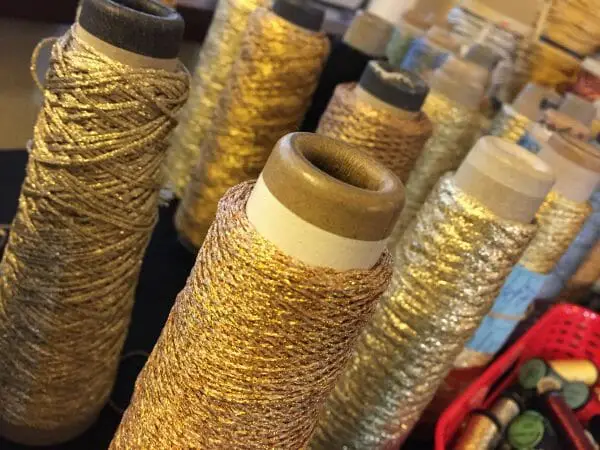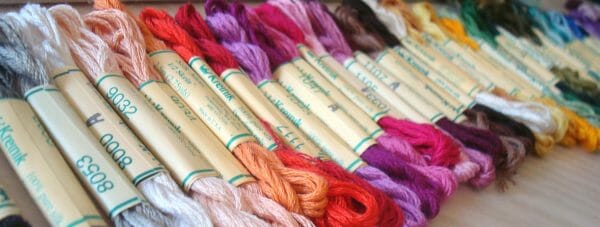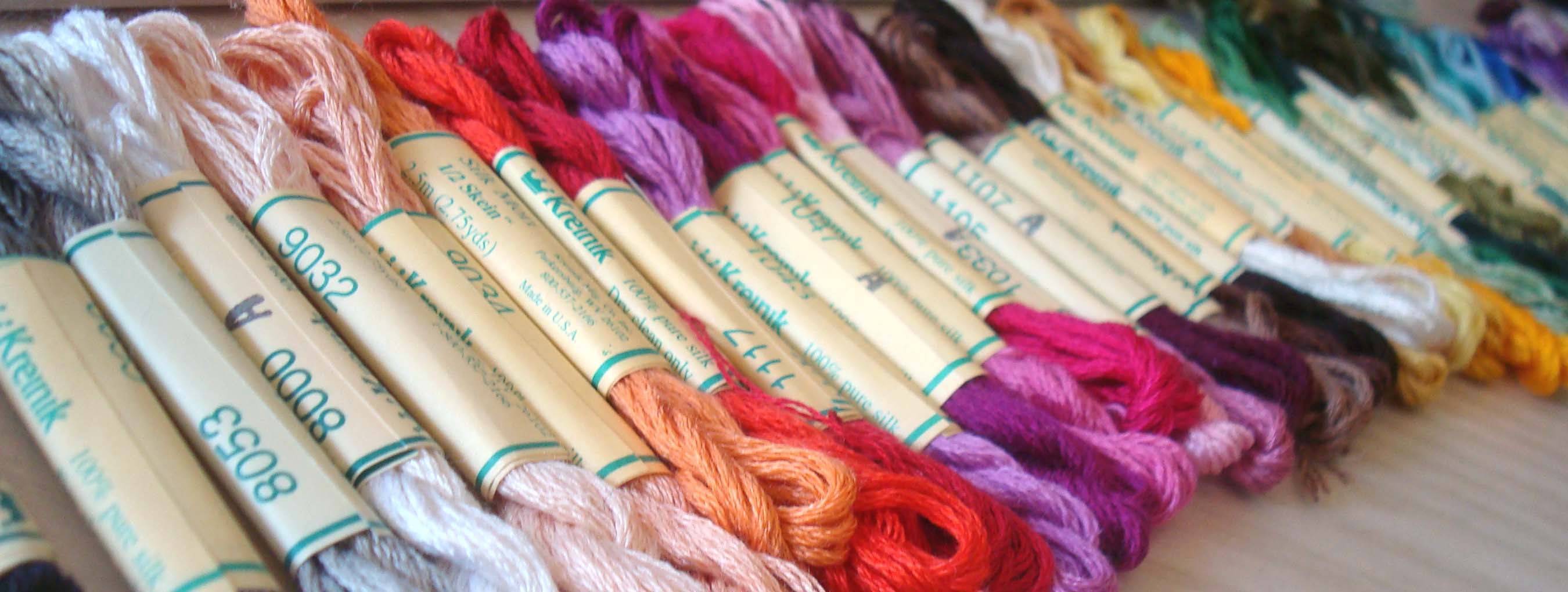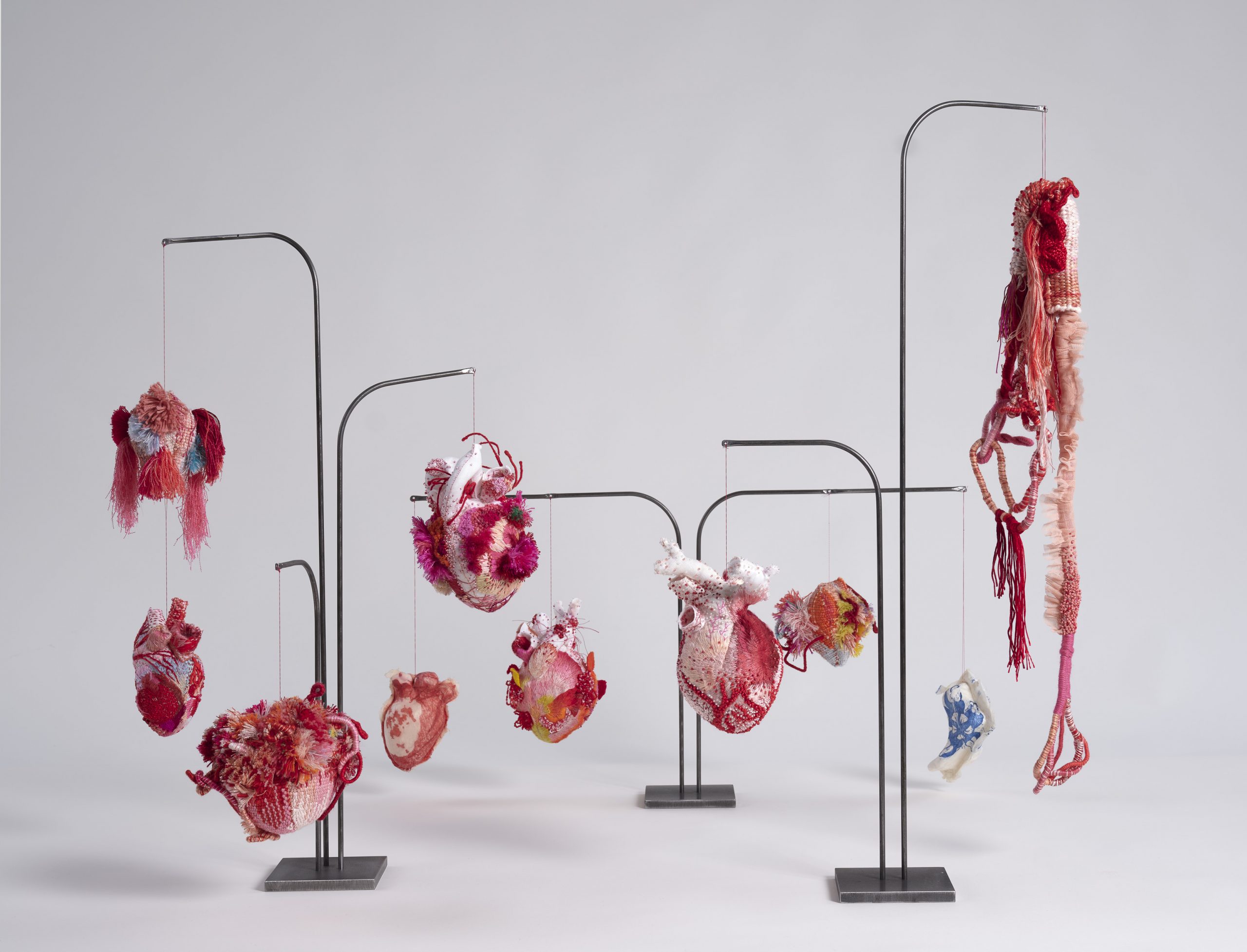
Hello! Kreinik Calling! Like the old Avon-Calling, but we’re talking about threads, those beauty products for your soul, er, stitching. Today I want to talk about an important topic: dye lots. I mentioned those words to Doug Kreinik and he practically slapped his forehead and grabbed his heart while saying “Ugh, the bane of any fiber maker!” Speaking on behalf of Kreinik, we hate dye lot problems as much as stitchers do. So let’s talk about how to solve these dastardly dye lot dilemmas. I want to share insider info on the subject too.
The Dilemma: dye lots are going to happen
Here’s a story from the late 1970s. Jerry and Estelle Kreinik were importing silk threads from France for needlepoint, cross stitch and embroidery. They had the idea of overdyeing silk to create beautiful, variegated shades that would make designs even more interesting. People loved them upon release. When they re-ordered, they wanted the exact same color. Problem: the process that made them so lovely also made them one-of-kind, impossible to duplicate exactly in every production run. The Kreiniks quickly ended their overdyed silk line and stuck with standard colors. (Side note: some of those overdyes still exist, and you can probably find them at Kreinik’s Factory Outlet Store Sale this week!)
Anyone who makes fiber—silk, metallic, wool, alpaca, cotton, rayon, etc—faces dye lot changes in production. Dyes change, environmental rules regulating dyes cause changes, differences in the structure of a fiber can cause it do absorb a dye differently, and on and on. As stitchers and creators working in fiber, we have to realize this fact of life.

Can’t a thread company do something about it?
I’ve worked with Kreinik thread for 23 years. We rarely had dye lot issues, but in the last few years they have popped up a handful of times. (Most recently, the company announced color 002HL Gold Hi Lustre would be seeing a dye lot difference; see details on the Kreinik blog.) Why the change? A few years ago the economy tumbled, interest in needlework waned, and many retail stores closed. Kreinik simply started making a smaller amounts of thread at a time. It was an economical and business decision that still makes sense, something facing every manufacturer of anything today. You produce smaller runs at a time so you don’t have too much inventory or waste resources. It’s a trend that will probably continue for years.
Shorter production runs can mean more frequent dye lot changes, although I’m happy to say in the Kreinik line at least, it has only affected a handful of colors. I know many small fiber makers in the knitting and spinning world, and they all have the same production issues. The manufacturers hate the idea of ruining anyone’s project. It’s not done to be mean, insensitive, or frustrate makers, although the latter does happen. So how do we avoid the frustration?
What do do about dye lot issues
Here’s my advice for avoid dye lot issues in any thread. I’m talking about Kreinik threads plus all of your favorites for embroidery, cross stitch, needlepoint, weaving, knitting, crocheting, fiber-arting and the such.
- Make sure you buy enough to complete your project. Cross stitchers, needlepointers, knitters and crocheters can find thread and yarn calculators online. Yarn Tree has one for cross stitch here: https://yarntree.com/java/xstitchcal.htm, and 123Stitch has one too. Lord Libidian recently wrote a whole blog post about thread calculators as well. These tools ensure you get enough thread to finish a project. That saves time, money and dye lot frustration.
- If you are mid-project and run out, contact retailers, friends, and online stitching groups to see if someone has old stock. It helps to know the round-about date of your thread. However, many of these stores and stitchers don’t know how old their thread is, so share a snippet or photo of your spool/skein. (Yes, alas, that means you can’t stitch down to the last inch.) I’ve seen stitchers buy what they think is new stock at a store, yet that store has had it for awhile or even bought it from a closing store. You can also try contacting the thread maker. Doug Kreinik was recently able to put dates on a stitcher’s Kreinik stash just by recognizing the eras of the fonts used on the label.
- If you buy threads, cross stitch kits, yarn bundles, or similar from eBay, thrift stores, stash exchanges, clearance and estate sales, you are probably going to have a dye lot problem. Temperature, storage, and time can alter colors (not to mention the quality of threads/fabrics), plus you have no idea of the born-on date for your goodies. I suggest labeling them as such, and becoming mentally ready to never find more of that thread if you need it. Unfortunately, that is reality.
- Check to see if a thread has a dye lot number on the label. If it doesn’t, mention it to the maker. This just happened with Kreinik. Stitcher Donna contacted the company about an issue with a pink shade. In conversation, Doug Kreinik realized how imperative it is that Kreinik metallics have dye lot labels. Kreinik has been doing it for years on their Silk Mori® but not metallics. With experimentation and adjustment on machinery, Doug was able to get a dye lot notice on the little Kreinik spool label. Starting with the new 002HL Gold Hi Lustre, for instance, you will see a “B” on the label indicating a dye batch. Honestly, all thread companies should do this. I think it’s worth asking them. Many yarn companies do this, and hopefully the small fiber makers will too if they don’t already. So pay attention to any extra markings or numbers on a thread/fiber label.
It’s an awful feeling to run out of thread mid-project, only to buy more and find out it doesn’t match. In most cases, the project is ruined or you have to remove stitches. Both are nightmare scenarios that turn our favorite hobby into a headache. Let’s do what we can to minimize dye lot problems on our end as stitchers, and rest assured that the thread makers are trying to minimize them too.



